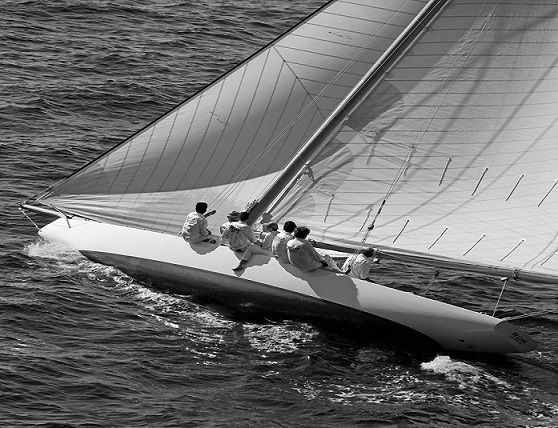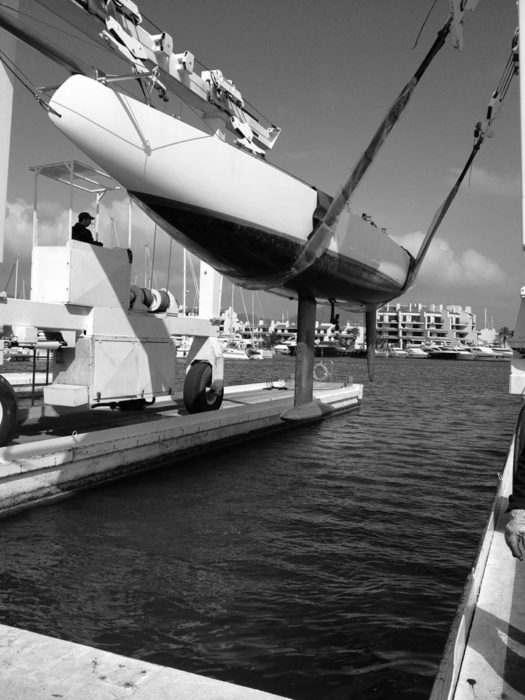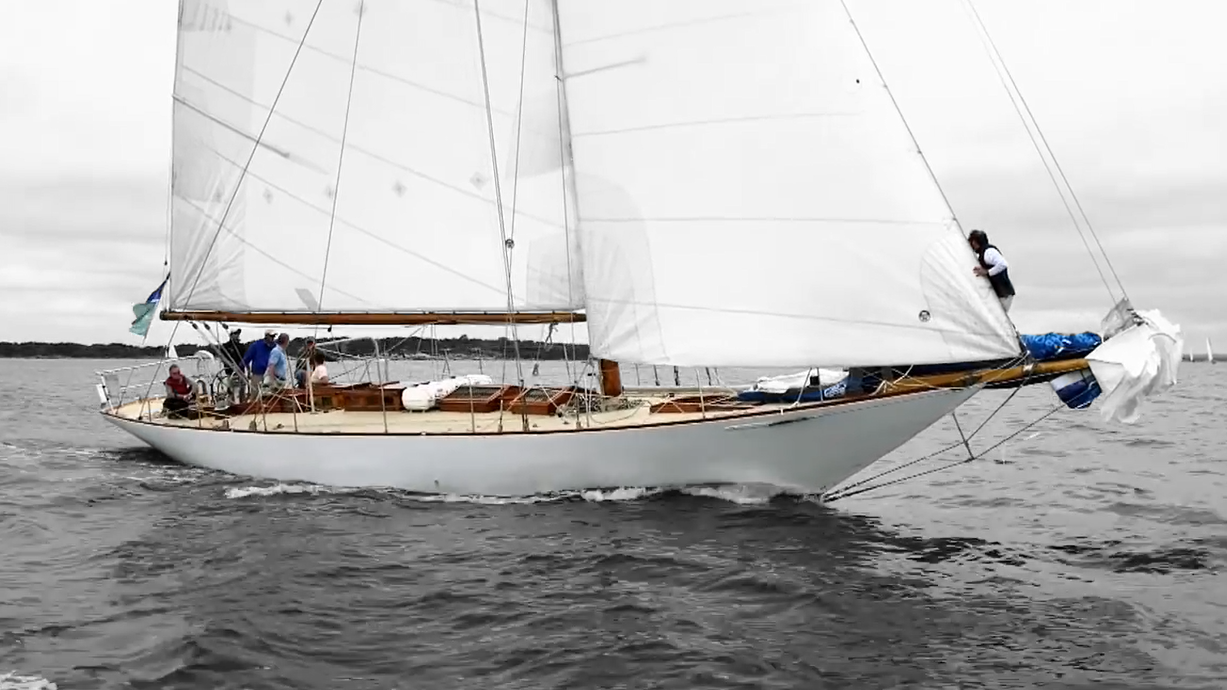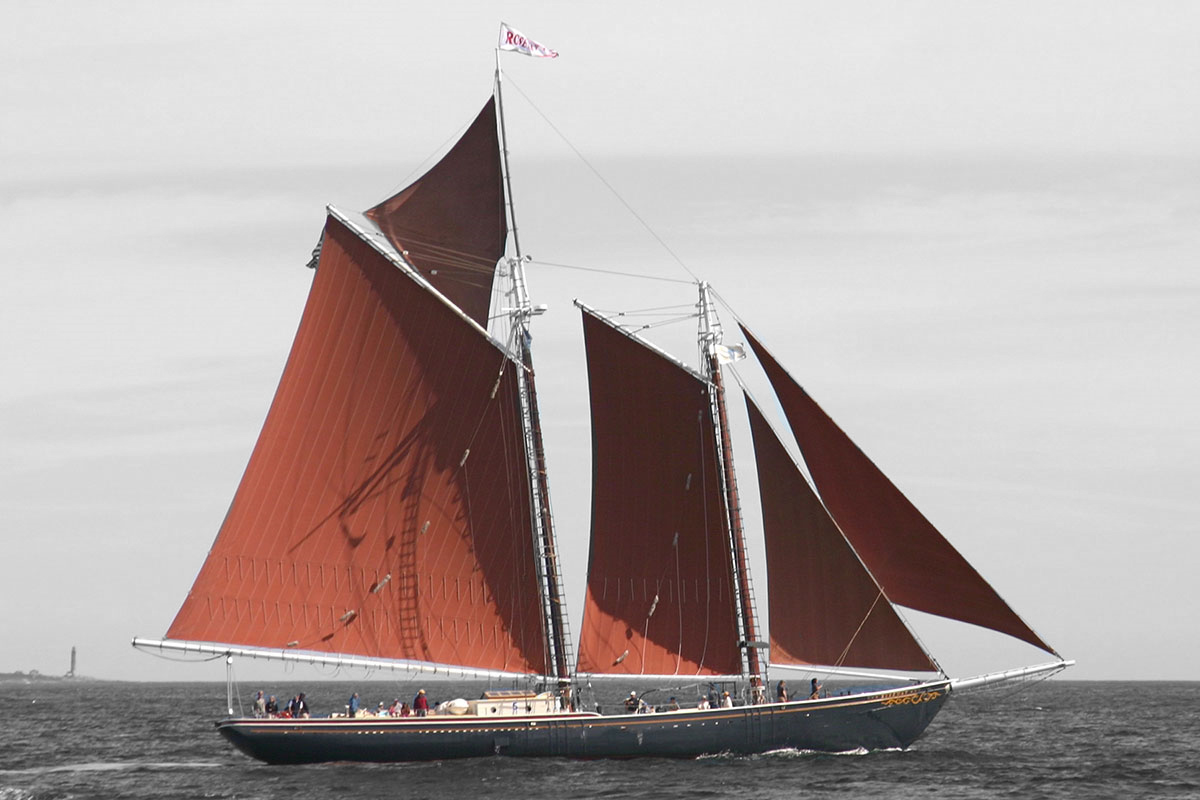
Type: Rig: Canoe YawlLOA: 28′ 0″ / 8.53m – LOD: 28′ 0″ / 8.53m – LWL: 24′ 0″ / 7.31m – Beam: 6′ 4″ / 1.93m – Draft: 3′ 9″ / 1.14m – Displacement: 6,600 lbs / 2993kg – Ballast: 3,360 / 1524kg – Design Number: 98 – Yard Number: – Designer: L.F. Herreshoff – Built by: – Year Built: 1956 – Restored By: – Current Name: – Current Owner: – Sail Area: 348 – Sail Number:
Historical:
This is one of the most popular small cruising boat designs, and with good reason. She features a relatively light and very sleek hull form compared to English canoe yawls, and her hull lines are regarded by many as some of the most beautiful ever drawn, in any genre.
At 3’9” her draft is more than most canoe yawls of her size, giving her greater power to carry sail. She has a correspondingly large rig to push her along well in light air, as befits a boat that was originally intended to be engineless. A great performer in a wide range of wind strengths, she is regarded as an exceptionally sweet-sailing boat. For cruising, she features a snug cabin just large enough to provide honest sleeping and seating comfort for two people.
Her large, deep cockpit offers unusually comfortable day sailing for a crowd, and is especially safe and secure-feeling, making it ideal for timid passengers or small children. With a boom tent the cockpit can become part of the overnight accommodations. The ketch rig allows many tricks of balancing and maneuvering, which are part of the fun of sailing without an auxiliary, and allows a quick reduction of sail while retaining full control, through dropping the mainsail while retaining the jib and mizzen—a reassuring thing for a family or a singlehander, in a sudden squall. Like all canoe yawls she is intended to be rowed, when there is no wind or when maneuvering in close quarters, and it is surprising how a boat like this will in fact move along quite well under oars in still water.
For purists the simplicity, economy, silence, and cleanliness of the oars will be part of the idea. It is also possible to fit a small auxiliary engine, and many boats have been built this way. For one of the best design commentaries ever written, see Herreshoff’s decription of Rozinante in his book, Sensible Cruising Designs.
Rozinante is covered from pages 500 to 518 in the book L. Francis Herreshoff VOL 2
From page 518:
“On one overnight run Down Set to Tenants Harbor, Maine, from Marblehead, Brendze found himself, during the long night watch, among a pod of whales. Luckily, he didn’t bump into any. When he related the experience to Skipper, Francis said if it happened again, he should warn the leviathans of his presence by lifting a floorboard and tapping on a keel boat with a penny. Common sense.
Brendze often felt Skipper’s presence on board his Rozinante. When the boat drew admiring attention, Brendze found it hard to say thank you, because he didn’t really feel it was his boat. Skipper said, “Oh, you have my permission.”
Comments
Donald Dillard – May 30, 2020
Is there an Rozinante org. or club of any kind presently. I am restoring a Kenner
hull.
Thank you, Don






